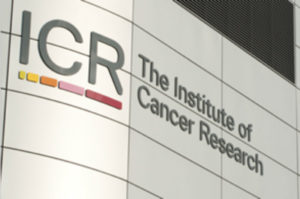Cancer biology: a general view of a vast biological landscape. It is an intriguing, but at times a disturbing story. It is a story that includes aspects of ecology, evolution, genetics and epigenetics, cell and molecular biology, biochemistry, bioinformatics, statistics, medical physics, ethics and many more fields of study.
Produced by The British Society for Cell Biology with the guidance and kind help of Professor Sir Mel Greaves, FRS, Director, Centre for Evolution and Cancer, Institute of Cancer Research, London, UK.
Consultant: Professor Mel Greaves, FRS, (ICR); Concept and text: David Archer (BSCB), with additions by Professor Greaves; Website realisation: Dr Judith Sleeman, (School of Biology, University of St Andrews and BSCB).
Thanks also to: Dr Catherine Botting (University of St Andrews) for proof reading; Dr Peter Campbell (The Wellcome Trust Sanger Institute, Cambridge); Helen Craig (ICR Public Engagement); Dr Paul Edwards (University of Cambridge); Professor Gillian Griffiths and Matthew Gratian, (CIMR, University of Cambridge); Joint BSCB/CIMR website: CELLpics – cell biology for Schools; Dr Robin Hesketh (University of Cambridge): Blog: Betrayed by Nature: The War on Cancer; Professor Nazneen Rahman, CBE, (ICR): Blog: Transforming Genetic Medicine Initiative; Dr Paul Reynolds (School of Medicine, University of St Andrews).
Cancer Biology: Introduction and Overview
These notes are written primarily for students studying A-level Biology (in England) or equivalent courses and for anyone else interested in Cancer Biology at an entry level.
There is a special note for A-level students at the end of Section 1.
The notes are presented at two levels; Level 1 provides a brief introduction. Level 2 gives more detailed information.
The notes are presented as 10 main Sections. In an 11th Section we want to (1) highlight the work and ideas of scientists in their specialist fields to illustrate the type of work undertaken in Cancer Biology and (2) tell you about some of the exciting ideas that may turn into important advances for treating patients with cancer; the disease of disorder.
Section 1: Cancer: a general note and the thoughts of a teenager who had cancer.
Section 2: What is Cancer? A disease of cells behaving badly; of a tissue high-jack by renegade anti-social cells. What does cancer look like? Characteristics of Cancer. Cancer in context. Cancers are ancient diseases.
Section 3: What causes cancer? Mutations: the underlying cause. Oncogenes and tumour suppressor genes. Test your skill at sequence analysis. Types of mutation.
Section 4: What causes mutations? External and internal factors, inherited genetic predispositions, UV light, radon gas and smoking, DNA damage.
These further sections will follow soon:
Section 5: Cancer; the body responds. ‘Neighbourhood Watch’ in the cell cycle, DNA repair, the immune system. Evolution, cancer and the case of the marsupial the Tasmanian Devil.
Section 6: Cancer progression. The evolution of cancer cells along Darwinian lines. A tumour as an organ in an ecological microenvironment.
Section 7: Cancer cells ‘seek’ new environment; will travel. Metastasis, the ecology of cancer cells spreading to other parts of the body.
Section 8: The treatment of cancer. The biological basis of treatments and their translation to patients including newer ‘personalised treatments’.
Section 9: Reducing your cancer risk; a take-away message. The European Code Against Cancer.
Section 10: Further information. Selected websites and other sources of information.
Section 11: Ongoing notes. It is intended that this section will take the form of a short Blog (1) profiling a specific cancer biology scientist, section or institution and (2) noting new ideas, approaches and findings that may turn into important advances.

